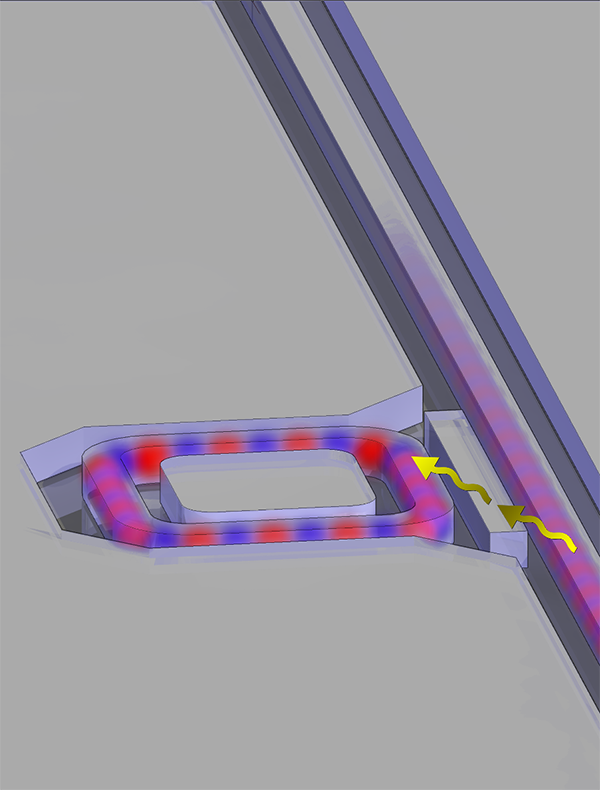Silicon photonics is one of the most promising ways for optoelectronic integration, ensuring CMOS fabrication compatibility and multitudinous production of low-cost devices. Optical microring resonator is one of the most important silicon-based devices and has been extensively employed in a wide range of physical studies and applications due to the resonance enhancement property. Incorporating coupling control of a microring resonator is necessary in many scenarios, but modifications are essentially added to the resonator and impairs the capability of optical enhancement. The researchers from Peking University proposed a flexible coupling structure based on adiabatic elimination that allowed low-loss active coupling control without any modifications to the resonators.
In the study, the research group experimentally demonstrated a flexible coupler based on the adiabatic elimination process so that the self-coupling coefficient can be monotonically or non-monotonically controlled. Through this coupler, some lossy electro-optical tuning mechanisms, such as the doping structure utilizing the plasma dispersion effect, can be employed to tune the self-coupling coefficient without any modifications to the resonators. The researchers derived the coupling coefficients in the coupling region under the adiabatic elimination condition and further established the transmittance function of the adiabatic elimination-based coupler, thus forming a consolidated analytical theory, which showed good agreement with numerical and experimental results. The tuning capabilities for coupling coefficients and the resulting coupling loss were analyzed, showing that the tuning in the adiabatic elimination-based coupler affected the coupling coefficients efficiently, but its loss was barely “felt” by the resonance system. The results have been published in Chinese Optics Letters, Vol 18, Issue 1, 2020 (Fenghe Yang, Pengfei Sun, Ruixuan Chen, Zhiping Zhou. A controllable coupling structure for silicon microring resonators based on adiabatic elimination[J]. Chinese Optics Letters, 2020, 18(1): 013601).
“It is very valuable to study how to incorporate coupling control of a microring resonator while maintaining the capability of optical enhancement.” said the corresponding author Zhiping Zhou, “The proposed adiabatic elimination-based coupler gives a new possible way and we expect many new studies to begin with this paper.”
In the proposed adiabatic elimination-based coupler, positive–negative (PN) junction can be implemented through CMOS fabrication processing, and the coupling coefficients would be dynamically modulated by electrical signal. In addition, the analysis result showed that the needed length of the PN junction was much shorter than the wavelength of the electrical driving signal, therefore, the active area of the adiabatic elimination-based coupler is equivalent to a lumped load, making the electro-optic bandwidth limited only by the resistor–capacitor (RC) constant and independent of the cavity photon lifetime. Based on the above considerations, high-speed electro-optic modulation with the proposed adiabatic elimination-based coupler is the follow-up work and this paper is the first step.


Adiabatic elimination-based coupler for the resonator-waveguide coupling control system


